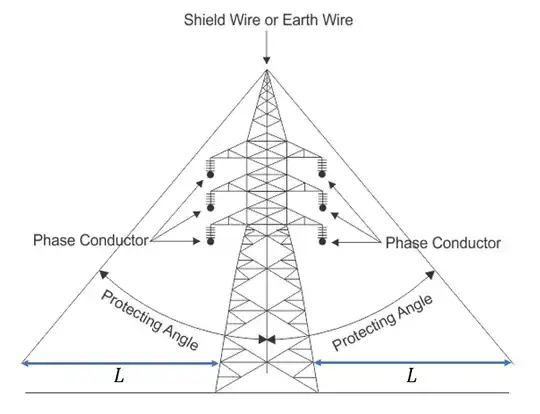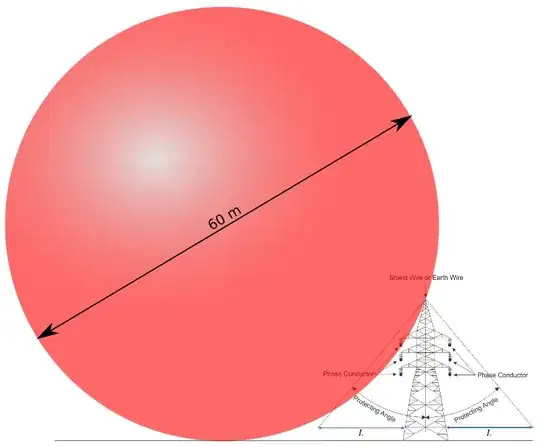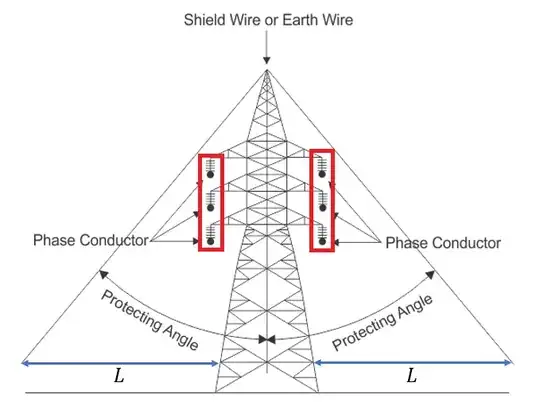This website, https://circuitglobe.com/overhead-ground-wire-or-earth-wire.html, said for effective shielding, we should keep the protecting angle as small as possible, the angle between 20° and 30° is quite safe, and it should not be kept above 40°.
Why? I think the larger the protecting angle becomes, the longer will the \$L\$ be, that is, the range that shield wire can protect will become larger. Isn't it good to let \$L\$ become longer? Why does the website say we should keep the protecting angle as small as possible?


